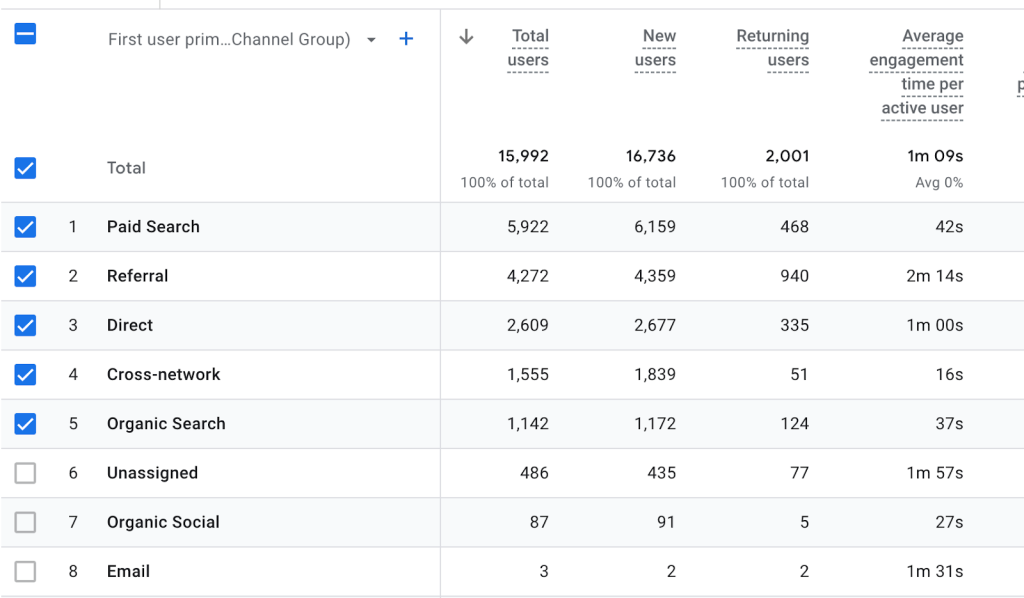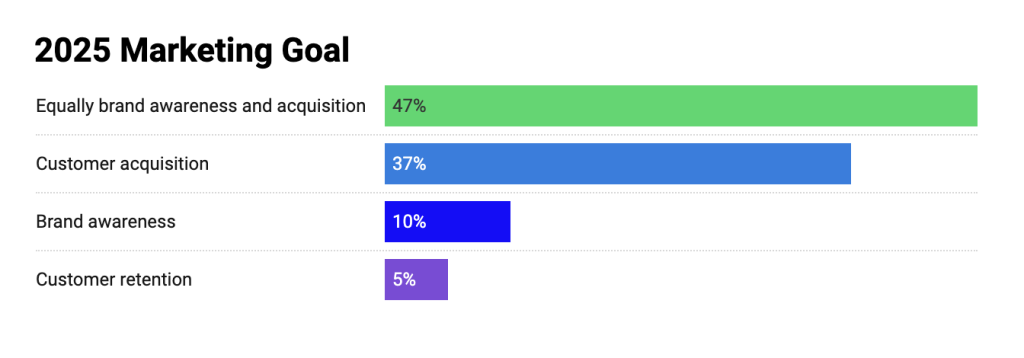Today, more than ever, marketing pros are caught between two opposing forces: the ideal and the reality.
The ideal: Balancing advertising campaigns that focus on long-term value and short-term wins for sustainable success over the long haul.
The reality: Focusing only on short-term wins due to business pressure. C-suite executives want to know what you did this day, week or month to improve the bottom line.
What is a marketer to do when caught in the middle?
How to overcome skepticism of your Google Ads program
The best way to squash skepticism about marketing and advertising campaigns that aren’t directly tied to short-term goals is to connect metrics that matter (and it’s not always revenue but rather things that build and lead to revenue) to business goals and outcomes.
For example, we have a new client with a strong brand in the UK and European markets, but is unknown in the US. Our Google Ads programs for this client target the US and a few Middle Eastern countries.
If we only reported revenue, the results for this program would appear lackluster: we’re just about breaking even for the moment. We’re up against a lot of competitors with deep pockets, so this isn’t too surprising. We’ve had a lot of feedback from the sales team that much of the hesitation stems from the company not being well known, so our clients are working really hard to add trust signals to our landing pages. With those signals in place, we expect to see a rise in revenue.
The program’s value comes through when we consider other metrics like new users, engagement and path to conversion. As you can see in the report below, paid search campaigns reached 6,159 new users during the first three months of launching our campaigns:

The new users metric is important for this client because it reflects growth in brand awareness for the client in these new markets—an essential business goal.
This is how we bridge the gap between the ideal and reality. We focus on success metrics for both short-term wins (like sales) and long-term wins (like new users and engagement). This approach works well for us and can be a game-changer for many businesses.
Support your business goals with Google Ads and LinkedIn Ads
When you shift your focus to business goals instead of short-term sales or revenue metrics, you may discover that Google Ads isn’t your only advertising option.
In fact, we’ve successfully built multi-goal ad programs for our clients using a combination of LinkedIn Ads and Google Ads.
One of our clients in the competitive career testing and coaching space thought LinkedIn advertising was too expensive for their modest budget and resisted trying it.
But after testing various strategies in Google Ads—with results that didn’t satisfy the client or us—we redirected a large chunk of his ad budget to LinkedIn.
On LinkedIn, we targeted specific job titles and industries to grow brand awareness and engagement. These campaigns allowed us to hone in on his ideal customer and support their long-term business goals.
At the same time, we kept a branded and a PMax campaign going on Google Ads. These are high-intent keyword themed campaigns that are geared to support short-term goals like joining their newsletter list and the community.
The two ad platforms work together to create brand awareness and engagement (as seen in an increase of website traffic and newsletter signups) and grow revenue (as seen in actual sales).
The good news: a shift in thinking is underway
While marketers have long struggled to balance short-term wins with long-term goals, I’m heartened to see that a shift in thinking is underway.
According to Marketing Brew’s 2025 Advertising and Marketing Report, brands are increasingly aware that focusing purely on short-term wins isn’t sustainable.
To quote, “While performance marketing has long been their primary focus, brands are realizing they can’t rely on it alone to deliver results.”
In their survey, 47 percent of marketers prioritize a balance of brand awareness and customer acquisition, recognizing that a strong brand fuels sustained performance.

Align your campaigns with clear business outcomes
While this shift in thinking is encouraging, we still have a long way to go. Until then, your best approach is to align your advertising campaigns with clear business outcomes—such as brand awareness, engagement, and revenue.
And when you combine advertising platforms like Google Ads and LinkedIn Ads, you can create a holistic strategy that drives both immediate sales and sustainable growth.
B2B,Google Ads


